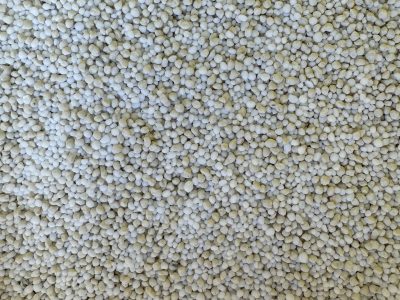$858.10/t
Urea PluS is a blend of Urea, Ammonium Nitrogen and Sulphate. Urea PluS is best suited to warmer soil temps and on lighter and/or irrigated soils where S can be a limiting factor to N response.

At Dickie Direct our core range of phosphate products do not contain Sulphate. For soils requiring sulphur we typically blend in elemental sulphur in the form of Sulphur 90S with these phosphate applications. With nitrogen applications we then blend in fast acting Sulphate at varying rates to ensure available sulphate is not a limiting factor to the nitrogen response. Sulphate requirements will depend on soil temperature, soil type, rainfall/irrigation and existing soil sulphur levels.
We recommend using Urea Plus during warmer soil temps (over 12 degrees) and on lighter soils and/or irrigated soils. In cooler soil temps we recommend using Ammonium Sulphate or Ammo 30.
Summer, Autumn, Spring